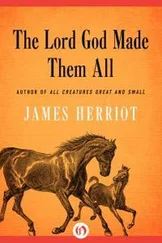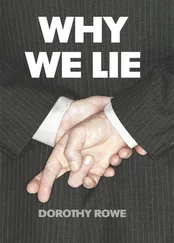“And after that?”
“We’ll probably find some backward area of Arabia,” Brooks suggested. “I think we’ll still be able to get some great shots of water wells and caravans down there.”
At the airport, when the Brookses were about to climb aboard the jet that would fly them home to Davenport in less than fourteen hours, Cullinane experienced an irrational urge that he knew at the time would get him into trouble. As his board member started toward the huge airplane, loaded down with cameras and color slides that would evoke the Holy Land for thousands, Cullinane asked, “Did you get a good shot of our airport?”
The humor of the question escaped the professor, who took it as a personal insult. He was about to say something but the sudden vision of a color slide of the large airport, with taxis delivering Jewish officials with briefcases and soldiers in Israeli uniform, overwhelmed him. He remembered when he had first seen the Holy Land, at the old port of Haifa, where his ship had docked and where a shrouded figure dressed much as Jesus must have dressed two thousand years before, had come ambling along the quay. In that pregnant moment Professor Brooks had sensed what his life mission was to be: to lecture throughout America with slides of the Holy Land showing people how the great religions had originated. And he was now convinced that this could not be done by showing slides of cities or modern developments. The Bible was something ancient. The men who composed it, or who participated in its adventures, were different, and he doubted that he would ever again bother to return to the Jewish portion of Palestine. This brash young digger, Cullinane, irritated him, too, and he thought: I’ll speak to the board about him when I get home. Is he really the man we want representing us in the Holy Land?
Cullinane, watching the bewildered man waddle onto the plane, thought: It would break his heart if he knew that when the disciples met in Tiberias, St. Peter probably said, “Look, James. We can’t possibly get to Jerusalem in three nights,” and James had probably replied, “We can if we scramble.” He thought of Makor, and reflected on how difficult it was to comprehend any past age: If a town of a thousand people exists for six thousand years, as Makor had, this means that nearly a quarter of a million different human beings must have lived inside our walls. How impossible it is to remember that they were ordinary people, who helped evolve and diffuse Judaism and Christianity and Islam. They didn’t go through life posing in bedsheets, and many of their greatest decisions must have been made when they traveled to mighty cities like Antioch and Caesarea, or to significant ones like Jerusalem and Rome.
“God,” he cried, as he uttered the prayer of the archaeologist, “I wish I could see Makor for one day as it actually was.”
But the vast plane thundered in its chocks. Its jets reverberated. Men covered their ears and the great machine lumbered down the long runway, gaining speed until it rose from the Holy Land, turned gracefully toward the sea and headed for Davenport, Iowa.
As he drove back to the dig, brooding upon Professor Brooks’ image of religion, which would condemn an area and a people to ancient ways of life, he became aware that a car was following him and he looked back to see a red-painted jeep that was famous throughout the Holy Land. At the wheel, hunched up like a giant flying through space, sat a very tall blond man, hatless and wearing a dark brown sackcloth clerical habit. His hands grasped the steering wheel as if they were going to crush it and his jeep bounced along at a careless speed. Obviously it was headed for Makor, and Cullinane was pleased to see it coming. He sped ahead, parked his own jeep at the door and ran into the office, crying, “Father Vilspronck’s coming! Tell the architect to get the drawings ready.”
In a moment the door slammed open and the huge brown priest began greeting Eliav and Tabari in the comradeship established through years of working with them at one dig or another. He dropped into a chair, leaned across the desk and caught Cullinane’s two hands. “What contradictory things have you been digging out of my ground?” he demanded, and the question was not preposterous, for by dint of continued intellectual effort Father Vilspronck had made the Holy Land his own in a strange and meaningful way. Nineteen years before, as a young priest from Holland, to which he would return one day a cardinal, he had arrived in Palestine on the same boat that had brought Professor Brooks, and he had asked himself: Would it be possible to determine in a non-hysterical way what happened in the Holy Land during the first four hundred years of Christianity? He had started then to piece together all fragments of knowledge relating to the problem, and as the years progressed he became the world’s leading authority on this subject. During one period he had served as a parish priest in Germany, and this had kept him from his chosen work; other years he had spent in Rome close to the powerful cardinals, who had spotted him for preferment, and although he was able there to study the great Vatican documents on Christianity’s beginnings, he was unable to proceed with his digging. But always he had managed to find some wealthy Catholic layman who would provide him with the funds necessary to return to Palestine for his researches. Now he smiled at Cullinane, whom he had known years before in the Negev when they both had worked for Nelson Glueck, and he said in the manner of a bad little boy cajoling his father, “Well, John, you know what I want.”
“I have them coming,” Cullinane replied, and he asked Tabari to speed up the architect, but before the Arab could do so, the expert from Pennsylvania entered the office with rolls of drawing paper, which he spread upon the desk. They were, as Father Vilspronck had hoped, detailed drawings of the foundation lines uncovered at Level VII, where a Byzantine basilica had ridden over a Jewish synagogue. Giving only a cursory glance at the former, Vilspronck carefully traced out the relationships of the synagogue stones. When he had done this he asked to see the lintel stone that had been found in the basilica wall, and for some minutes he studied the remarkable find in silence. Then he asked, “Where’d it stand in the wall?” Photographs were produced and the giant priest reconstructed what the men had seen that day. Finally he turned to the architect and asked, “Have you attempted any projections?”
The Pennsylvanian coughed and said, “After all, the length of wall we uncovered was only…”
“I know,” the priest interrupted. “But I take it you did make some guesses.”
And the architect flung out a large sheet of paper on which the two walls were shown as found, rock by rock, prolonged into full-scale guesses as to what their finished edifices must have been. If an observer had wanted to witness the true mystery of archaeology, the manner in which living men fight to penetrate the minds of men long dead, he should have seen that drawing of the Pennsylvania architect. As a basis for his deductions, the architect had merely twelve feet of basilica wall running from northwest to southeast; below that he had a right angle marking the earlier synagogue, and using only these slight clues he had drawn the completed buildings, and in doing so had come very close to what the future digs at Makor would uncover.
Father Vilspronck studied the synagogue and asked, “Why do you make it this size?”
The architect replied, “Judging from all the synagogues we’ve uncovered so far, our lintel stone is not large enough for a main entrance. So I must conclude that it rested over one of three smalí doors. That yields a façade like the one I’ve drawn. The thickness of the walls is exactly what we’ve found elsewhere. Working from these hints, I’ve spent a lot of time in the old synagogues at Baram, Kefar Nahum and Beit Alfa. This is about what we’re going to find.”
Читать дальше

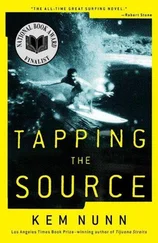


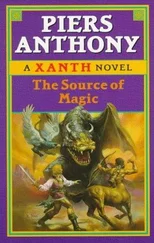
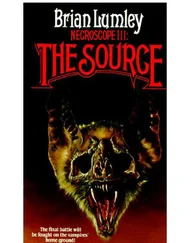
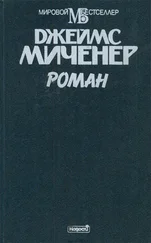

![Джеймс Купер - Пионеры, или У истоков Саскуиханны [The Pioneers, or The sources of the Susquehannah]](/books/395797/dzhejms-kuper-pionery-ili-u-istokov-saskuihanny-t-thumb.webp)
